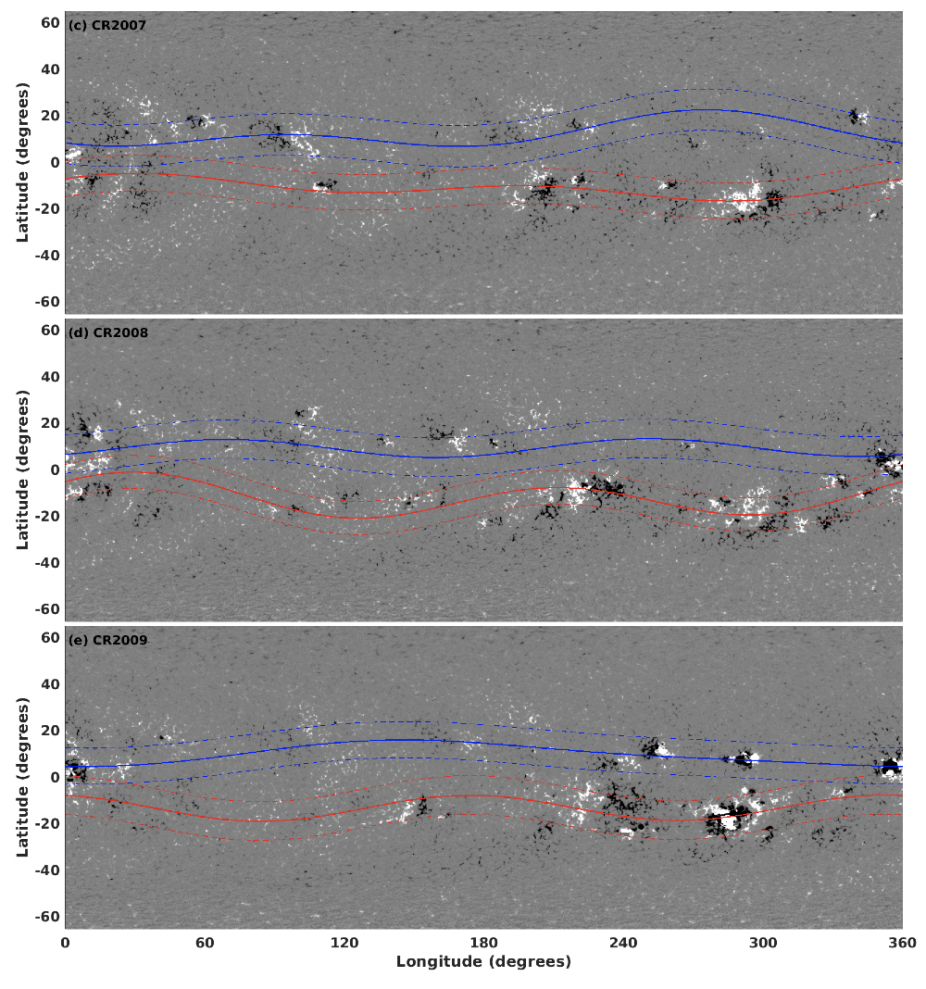Publication Name: ApJ; First HAO Author: Mausumi Dikpati; Authors: Mausumi Dikpati, Scott W. McIntosh, Subhamoy Chatterjee, P. Ambroz, A. A. Norton, P. A. Gilman, K. Jain, A. Munoz-Jaramillo
Dikpati, et. al., derive magnetic toroids from surface magnetograms by employing a novel optimization method based on Trust Region Reflective algorithm. Toroids obtained are combinations of Fourier modes (amplitudes and phases) with low longitudinal wavenumbers. The optimization also estimates the latitudinal width of the toroids. We validate the method using synthetic data generated as random numbers along a specified toroid.

Three panels display the active-regions' toroid patterns (North blue and South red), derived from SoHO/MDI synoptic magnetograms for Carrington Rotations 2007, 2008 and 2009, i.e., just before and during the Halloween storms of 2003, which produced hazardous impact of space weather from 11 X-class and 46 M-class flares, and also beautiful aurorae as far south as Florida, Texas and Mediterranean Europe.
We compute shapes and latitudinal-widths of toroids from magnetograms, usually requiring several m’s to minimize residuals. A threshold field- strength is chosen to include all active regions in magnetograms for toroid derivation, while avoiding non-contributing weaker fields. Higher thresholds yield narrower toroids, with m = 1 dominant pattern. We determine the spatio- temporal evolution of toroids by optimally weighting amplitudes and phases of each Fourier mode for a sequence of 5 Carrington Rotations (CRs) to get the best amplitude and phases for the middle CR in the sequence. Taking more than 5 causes ‘smearing’ or degradation of toroid structure. While this method applies no matter at what depth the toroids actually reside inside the Sun, by comparing their global-shape and width with analogous patterns derived from MHD tachocline shallow-water model-simulations, we infer that their origin is at/near the convection-zone base. By analyzing the ‘Halloween’ storms as an example, we describe features of toroids that might have caused the series of space weather events in October-November of 2003. Calculations of toroids for several sunspot cycles will enable us to find similarities/differences in toroids for different major space weather events.